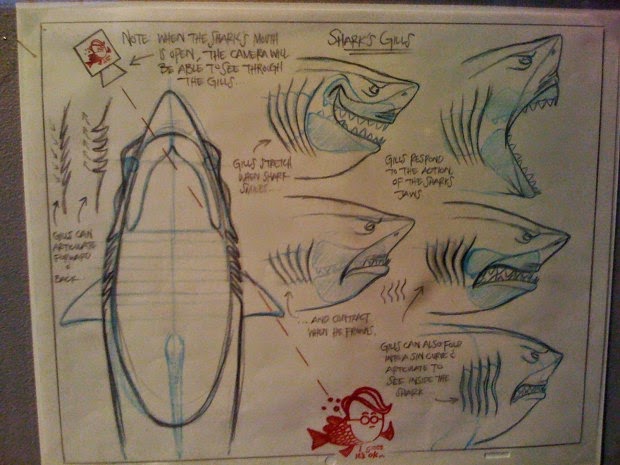By James Ball
In this post, I’m going to give a quick overview into the
Pre-production stage of 3D animation, and the first half of the Production
stage of 3D animation. The topics I’ll be discussing are idea, story, storyboarding,
animatic, design, layout, R&D and last but not least . . . 3D Modelling.
The example I will work from is the 2003 Pixar film Finding Nemo.
Pre-production
Idea – Getting an idea can sometimes be a little tricky; And when
we do eventually get one into our heads it is generally when we are in the
shower or siting on a toilet. Be sure to always carry something to write on
because remember that your brain . . . is a very unreliable friend. While we’re
on the topic of ideas, the idea for Finding Nemo (FN) started back in the year
1997.
Story – Now that you have come up with your fantastic Idea you now
have to flesh out and develop a story that will make a panel of executive at
your place of work very happy with you that they give you the all clear and let
you proceed in creating your masterpiece of a story. In the case of FN story
that is told is the classic “Hero’s Journey” where the dad is doing all he can
to save his one last child from a violent death by shacking.
Storyboard – It is at this point in Pre-production that you really
get to see an early version of the films shots and sequences come into reality
and also to change things up that don’t seem to be working. This is also a very
necessary step in making the animation process down the track just that much
easier. Below is an example of one of the story boards that was used in the creation
of the Angler Fish sequence in the film.
Animatic – The animatic is the storyboard put into movie form with
Sound FX and dialogue from the script added in over the top. At this stage the
dialogue doesn’t necessarily have to be of the final voice actors and can be
spoken by just the people available in the studio at the time of recording. Below
is an Animatic recreation of the Angler Fish sequence recreated by user eMokid
64 on YouTube.
Design – It is in this stage of pre-production when the final
designs of and art work for the film can be produced to finalise character
design and environment design. Below are examples of both from the film.
Production
Layout – defines the camera, starting position, framing (which objects are
seen), movement
It also the defines basic object positions or the
starting point for that section of animation the storyboarding from before is
used as reference.
Modelling – When modelling remember to always be looking back and
always checking the character turn around that you get from the art department.
Remember when making the models, they have to look good to please the eye, be
functional to fit in the pipeline and work when deformed for animation.
Untill next time, this is James Ball signing out.
Rescources
projects in digital art - 2007 fabio pellacini - the 3D production
pipeline - http://pellacini.di.uniroma1.it/courses/projects09/projects09-example.pdf
10 Fun Facts about Finding Nemo - By Marc Deleon ⋅ Posted on January 29th, 2015 - http://moviepilot.com/posts/2015/01/29/10-fun-facts-about-finding-nemo-2636388?lt_source=external,manual
Find Nemo Animatic recreation - eMokid 64 - https://www.youtube.com/watch?v=wyFGwgo9_fQ
Finding Nemo - The Art of Finding Nemo - http://www.pixartalk.com/feature-films/nemo/finding-nemo-the-art-of-finding-nemo/







No comments:
Post a Comment